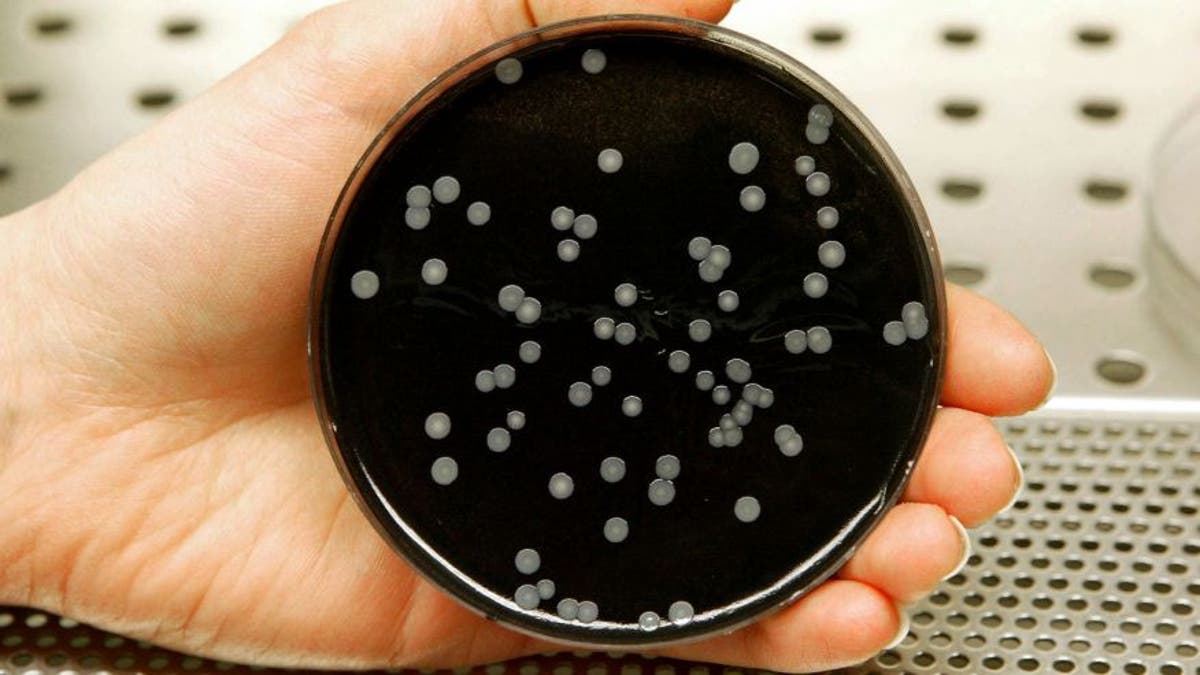
A technician holds a culture dish with colonies of legionella in a laboratory. (Reuters)
The reported number of deaths from the largest outbreak of Legionnaires’ disease in New York City has increased from 10 to 12, NYC Mayor Bill de Blasio said during a press conference Monday. The total number of Legionnaires’ cases is now 113, up from 101 on Friday. Of those patients who have been hospitalized, 76 had been discharged as of Monday afternoon, de Blasio said.
De Blasio confirmed that the bacteria had also been found in an additional two cooling towers in the neighborhood, and officials said a total of 12 of 39 cooling towers in the South Bronx had been impacted. Those cooling towers, which are used to cool down large air conditioning units, have been disinfected or would be by the end of the day Monday, the mayor said.
City officials confirmed Friday that five Bronx buildings tested positive for the bacteria, and on Saturday that an additional five also tested positive, including two courthouses, a post office and a high school. Those buildings have already had their cooling towers cleaned and do not appear to pose any danger to locals, health officials said.
“We are still several days away from getting final results of those tests that will allow us to make firmer conclusions, but everything that we know today points to one or more of those five original sites as the problem location,” de Blasio said Monday.
Following an order Thursday from the NYC Health Commissioner that building owners with cooling towers disinfect their towers, the city began collaborating with the state and the Centers for Disease Control and Prevention (CDC) to deploy teams for testing.
De Blasio said there is no evidence that there have been new Legionnaires’ cases since Aug. 3 and that the new cases could be attributed to a lag time in reporting. The number of new daily cases peaked July 30.
“We have encouraging news that this outbreak has slowed,” city health commissioner Dr. Mary Bassett said during the press conference.
Legionnaires’ disease is a respiratory disease that causes pneumonia-like symptoms, and isn’t transmitted from person to person but rather by contact with the bacterium Legionella. The bacteria can thrive in warm water and become especially dangerous when the water is turned into a mist that can be inhaled. Medical investigators have linked past outbreaks to public fountains, air conditioning systems, spas, showers and even the misters than keep fruit moist in supermarkets.
The elderly, the young and individuals with underlying health issues are most at risk. Officials aren’t sure what started the current outbreak, which began last month.
The CDC estimates that between 8,000 and 18,000 people in the United States are hospitalized with Legionnaires' disease every year, but the actual number may be higher due to underreporting. More illnesses usually occur in the summer and early fall.
“It is vital to remember that because this is not a contagious disease and because it is a disease that can be treated with antibiotics, it is still crucially important to inform anyone in the affected area who believes they have the symptoms that they must get care immediately,” de Blasio said.
The Associated Press contributed to this report.
